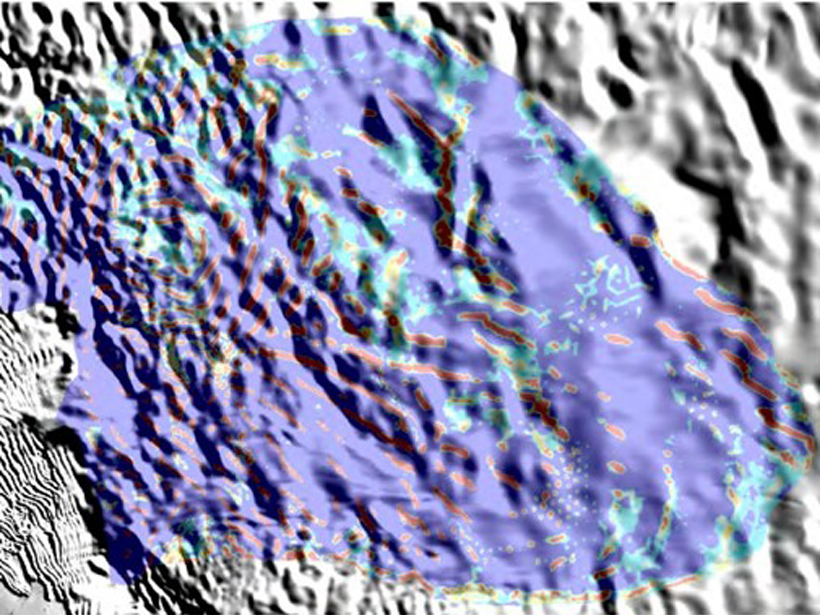Glaciology is an observation-driven field. Its major discoveries such as the existence of ice streams in Antarctica (e.g. Rose, 1979), wide-spread water-filled aquifers in Greenland (e.g. Brangers et al., 2020), accelerating ice loss from ice sheets and glaciers (e.g. Shepherd et al., 2019) and Antarctica’s floating ice shelves (e.g. Paolo et al., 2015), and many others have been made by observations, either in the field, from aircraft, or from satellites. However, to understand the glaciological processes that manifest themselves in such observations, unravel their interactions, and predict their evolution, a different research tool is needed: modeling.
Over recent decades, diverse modeling approaches have driven significant advances in our understanding of the behavior of glaciers, ice sheets, and their components.
Over recent decades, diverse modeling approaches have driven significant advances in our understanding of the behavior of glaciers, ice sheets, and their components (ice streams, ice shelves and icebergs).
Glaciology began to acquire its theoretical foundations in the late 1950s and early 1960s; theoretical, numerical, and statistical modeling approaches have been developed since.
Although satellite-borne observations have revolutionized our views about the motion and changes in volume of glaciers and ice sheets, such observations are restricted to the ice surface.
Meanwhile, ice-penetrating radars have revealed their internal structure, but these observations cover very limited area and vast parts of glaciers and ice sheets will remain hidden from any instrumental observation for the foreseeable future.
To work around these limitations, inverse modeling approaches that allow us to infer, or at least to get a sense of, unobserved properties of ice sheets and glaciers (such as the image above), have become widely popular in glaciology since pioneering studies by MacAyeal et al. (1995).
Furthermore, since glaciers and ice sheets interact with other components of the Earth system, including the atmosphere, ocean, lithosphere and biosphere, modeling is the most efficient, if not the only available, tool to gain insights into mutual effects of these components on glaciers and ice sheets, and feedbacks of such interactions.
For example, models simulating interactions between floating ice shelves and the surrounding ocean were first developed in 1980s (e.g. MacAyeal, 1984). Since then, their comprehensiveness, complexity, and spatial resolution have substantially improved. Dynamically coupled ice/ocean models are now capable of simulating interactions between ice flow and the ocean circulation in sub-ice-shelf cavities (e.g. Seroussi et al., 2017).
Models are indispensable for understanding how glaciers and ice sheets might behave under climatic conditions substantially different from the present ones. The general characteristics of paleo ice sheets can be inferred from geological evidence, but understanding the processes driving the evolution of ice sheets requires physically realistic models. Ice-sheet models (e.g. Peltier and Marshall, 1995) provide an idea about how they might have behaved, including how they form and disappear. Understanding how glaciers and ice sheets will respond under future climate conditions is an urgent issue, and modeling is a key to making progress in it.
A newly opened special collection, entitled Modeling in Glaciology, aims to bring together new research showcasing modeling as a powerful and versatile tool for addressing diverse problems in glaciology.
A newly opened special collection, entitled Modeling in Glaciology, aims to bring together new research showcasing modeling as a powerful and versatile tool for addressing diverse problems in glaciology.
This a collaboration between four AGU journals – Geophysical Research Letters, Journal of Advances in Modeling Earth Systems (JAMES), JGR: Earth Surface and JGR: Oceans. The goal is to provide a snapshot of the current state of modeling and demonstrate the significant progress that has been made in the field.
We solicit manuscripts on new advances in modeling of any kind (e.g., theoretical, numerical, inverse, stochastic, standalone, coupled) that improve understanding of any aspect of glaciology and the interactions of glaciers and ice sheets with the broader Earth system. Papers can be submitted between 01 September 2020 and 01 September 2021 to the most appropriate journal.
—Olga Sergienko ([email protected]), Editor, JGR: Earth Surface; Mathieu Morlighem, Editor, Geophysical Research Letters; Sophie Nowicki, Associate Editor, Journal of Advances in Modeling Earth Systems (JAMES); and Laurence Padman, Editor, JGR: Oceans
Citation:
Sergienko, O.,Morlighem, M.,Nowicki, S., and Padman, L. (2020), Modeling: A powerful and versatile tool in glaciology, Eos, 101, https://doi.org/10.1029/2020EO146349. Published on 01 July 2020.
Text © 2020. The authors. CC BY-NC-ND 3.0
Except where otherwise noted, images are subject to copyright. Any reuse without express permission from the copyright owner is prohibited.

